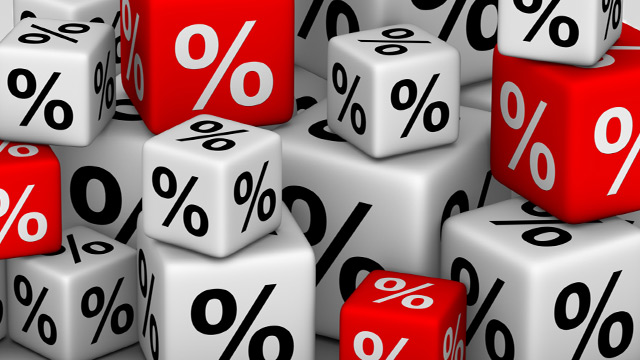There’s been a lot of talking in the econ blogosphere about “artificially low interest rates”. This is a concept that’s often expressed by people who are promoting the “Fed as manipulator” view of monetary policy. And they’re basically right even if they overstep in the way they communicate the point.
I think Noah Smith’s article on Bloomberg View did a nice job explaining the key points here, but I will reiterate some of these points since they are concepts I think are important:
- The Fed is the monopoly supplier of reserves to the banking system. Therefore, it can always set the Fed Funds Rate. In fact, in order to supply reserves (which are issued primarily for payment settlement) the Fed must ALWAYS force the Fed Funds Rate HIGHER from 0% where it would naturally go if the Fed did not establish a floor of some sort. I like to think of the entire Fed System as an intervention in what would otherwise be a private clearing system. Therefore, if you want to think of the Fed as an “artificial” construct then fine. But we should understand that “artificial” construct as it is and not how we want it to be.
- People sometimes say that interest rates have been “manipulated” lower than they otherwise would be. But this ignores the fact that Fed policy mostly tracks the rate of inflation. In other words, in low inflation environments interest rates are low and in high inflation environments interest rates are high. For instance, in today’s environment interest rates are low because inflation is low. Therefore, we can confidently say that interest rates would be low whether the Fed was “manipulating” rates or not. But the real kicker here is that long rates are also low which is consistent with low inflation. So, unless you think the entire long end of the yield curve (which is controlled by the market and not the Fed) is being manipulated lower then you have to admit that interest rates are low for totally rational reasons.
- While the Fed Funds Rate is important it is simply one rate out of many. Remember, banks and other credit issuers use the Fed Funds Rate as a benchmark, but that does not mean it drives the interest rate across the entire economy and across all financial assets. It is merely one component of the spread that determines how profitable various credit instruments may or may not be.
- I think Noah gets the description slightly wrong in his conclusion when he implies that the government creates money. The government primarily creates “outside money” or money that serves as a facilitating form of money to “inside money”. That is, bank deposits and other forms of inside money (money created INSIDE the private sector) dominate the medium of exchange. And outside money (cash, coins and reserves) are really just there for facilitate the use of bank deposits (for interbank payment settlement, using the ATM, etc). Thinking of the government as the creator of “money” can be an extremely misleading way to understand the monetary system.
- Lastly, Noah references a Paul Krugman article which implies that there is a “natural” rate of interest in the economy where markets clear. I just don’t think this is a very useful concept as it implies that the interest rate is some variable by which the economy can be steered by the Fed towards full employment and price stability. I just don’t think that’s right, but that discussion will have to wait for another day.
In the end it’s all about constructing a coherent and consistent framework for understanding the monetary system.
Mr. Roche is the Founder and Chief Investment Officer of Discipline Funds.Discipline Funds is a low fee financial advisory firm with a focus on helping people be more disciplined with their finances.
He is also the author of Pragmatic Capitalism: What Every Investor Needs to Understand About Money and Finance, Understanding the Modern Monetary System and Understanding Modern Portfolio Construction.


Comments are closed.